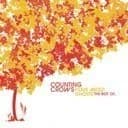The F♯ major scale follows the major scale pattern with six sharps: F♯ to G♯ (whole step), G♯ to A♯ (whole step), A♯ to B (half step), B to C♯ (whole step), C♯ to D♯ (whole step), D♯ to E♯ (whole step), and E♯ to F♯ (half step). With F♯, G♯, A♯, C♯, D♯, and E♯ in its key signature, this scale creates a distinctively bright, elevated sonority. The interval pattern (2-2-1-2-2-2-1 semitones) maintains the major scale structure while the six sharps, including the rarely-seen E♯, produce a brilliantly sharp-edged tonal color that feels radiant and somewhat exotic, making it valuable for specific musical contexts where this character is desired.
F♯ Major vs. G♭ Major: The Enharmonic Dilemma
F♯ major and G♭ major are enharmonic equivalents, sounding identical but using different notation. Both contain six accidentals (six sharps versus six flats), making them equally complex on paper. However, most musicians and composers prefer G♭ major for several practical reasons. First, flats are generally considered slightly easier to read than sharps by many players. Second, F♯ major includes E♯ (which sounds like F natural), a relatively uncommon accidental that can cause reading confusion. Finally, G♭ major appears more frequently in established repertoire, making it the more familiar choice. That said, F♯ major is sometimes chosen in sharp-based contexts where it creates smoother harmonic progressions and key relationships.
When Composers Choose F♯ Major
Despite G♭ major's general preference, F♯ major appears in significant musical works, particularly when composers are working in sharp-based key areas and want to maintain notational consistency. Some Romantic composers deliberately chose F♯ major for its specific character and the way it appears on the page, believing the sharp-based spelling affects how performers interpret the music. In popular music, songs like "Drops of Jupiter" by Train and "Boulevard of Broken Dreams" by Green Day utilize F♯ major (though they might be performed or transcribed in G♭ major depending on the arrangement). The key's bright, elevated character makes it suitable for moments requiring brilliance and upward energy.
Technical Approach to F♯ Major
Learning F♯ major requires systematic preparation and careful practice. Piano students should master B major (five sharps) before attempting F♯ major's six sharps. Use proper fingering (right hand: 2-3-4-1-2-3-1-2 or 3-4-1-2-3-1-2-3; left hand: 4-3-2-1-3-2-1-4), paying special attention to E♯, which requires playing F natural while reading a sharped note. Begin practice at 50 BPM, focusing primarily on reading accuracy, as the six-sharp signature demands intense concentration. Many advanced players find it helpful to practice F♯ major specifically to strengthen their sharp-key reading skills and to understand the theoretical completeness of the major scale system.
While F♯ major is less common than its enharmonic equivalent G♭ major, understanding it demonstrates comprehensive knowledge of key signatures and enharmonic relationships. Explore its parallel minors: F♯ Harmonic Minor and F♯ Melodic Minor. The scale's bright, elevated character offers a specific tonal color valuable in composition. Whether you encounter F♯ major in its original notation or choose to think of it as G♭ major, familiarity with both spellings makes you a more complete musician.





